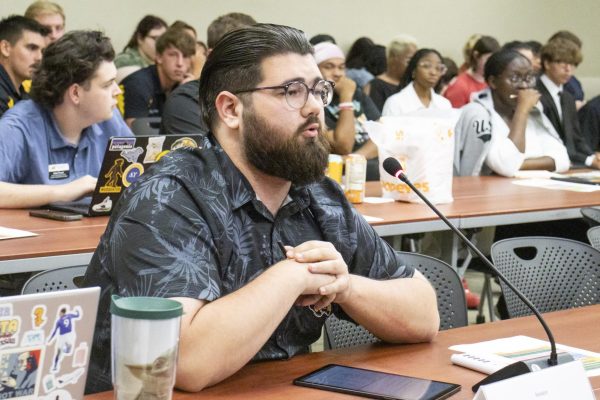Letter to the Editor — David Catt: “Beware the Athletics Industrial Complex”
Congratulations to the Shockers on trading up from the Missouri Valley to the American Athletic Conference. Pivoting to the AAC signifies a gain in institutional prestige, the ever nebulous mission of higher education institutions, and a long deserved increase in stature in college basketball. Sports Illustrated heralded the move as conference realignment that finally “makes sense” and is “mutually beneficial to both parties.”
However, among all the hooplah a concerning trend faces students and academics as WSU enters the AAC. Contrary to popular belief, the business of college sports does not generate money for the academic sector of the American higher education system. The converse is true: a substantial sum of financial subsidies are channeled from the academic revenue of higher education (tuition, student fees, tax dollars) to the athletic business of higher education to cover increasing costs and the ongoing facilities arms race. WSU is a microcosm of the system: athletic department revenue increased from $13.4 million to $26.7 million from 2005 to 2015, aided by an increase in its subsidy from $4.6 million to $7.3 million over the same period. This amounted to roughly $525 annually per student in 2015. Critics of this analysis might argue that nonmonetary benefits like prestige and indirect benefits like increased applications or enrollment accrue from increased spending and athletic performance. However, WSU enrollment barely increased over the last 6 years when athletics spending increased by 35 percent and the basketball team had great success.
Proponents of the conference change have failed to acknowledge the financial disparity between WSU and other AAC member schools and the likelihood that subsidies must increase to pay for higher AAC travel costs, new or improved facilities, and increasing coaching and administration costs; this is a common point of neglect in conference change discussions. In 2015, public AAC schools for which financial data are available generated athletics revenues ranging from $43.4 million to $72.2 million, supported by subsidies ranging from $18 million to $28 million. As the only non-football school, the comparison between WSU and current AAC schools is not apples to apples, and WSU’s current budget supports several fewer sports than other schools, but the revenue gap is still substantial. Competing in the AAC at a high level will require commensurate facilities and pay to attract and keep coaches and recruits. How will WSU compete financially in a conference with schools that have lazy rivers for athletes, state-of-theart training centers and athlete dorms, and the cash cow that is a football team?
WSU certainly could maintain its current subsidy level, but when push comes to shove, athletic directors and university administrations across the country have continually shown a willingness to engage in the athletics industrial complex by increasing the subsidy burden to normal students. Student leaders should remain mindful of this issue and engage in productive discussions with university administrators to analyze the benefits of increased athletics spending to ensure that future generations of WSU students aren’t burdened with excessive costs. For more information on NCAA athletics financials, access USA Today’s public online database.
— David Catt, a Kansas City native, is a graduate of the University of Kansas and is currently a PhD candidate in public policy analysis at the RAND Corporation’s Pardee Graduate School in Santa Monica, CA.













Student loan reality • May 12, 2017 at 10:01 am
So students go to college to learn and many of them take out loans to so. So we take student athletes (“tv entertainment”) out of said learning environment and send them on long road trips to entertain the country paid for by US tax dollars in the form of student loans. When those students return to school they are behind in challenging courses so they often take really dumb classes such as remedial math, yoga, meditation, etc. Most of the athletes will not go pro and graduate with degrees that really qualifies them for nothing more than to teach their sport at a highschool, teaching more student athletes who maybe could fix a form of cancer, be a laywer, or something truly benifical to society but don’t because they never have time to take rigorous courses because they are always entertaining tv viewers. Beaware that going forward with the cord cutting trend there is going to be less money in sports . Now I LOVE college football and basketball, but if anything gets cut, I hope its college sports. There’s no reason a university should ever financially support a junior pro-team.